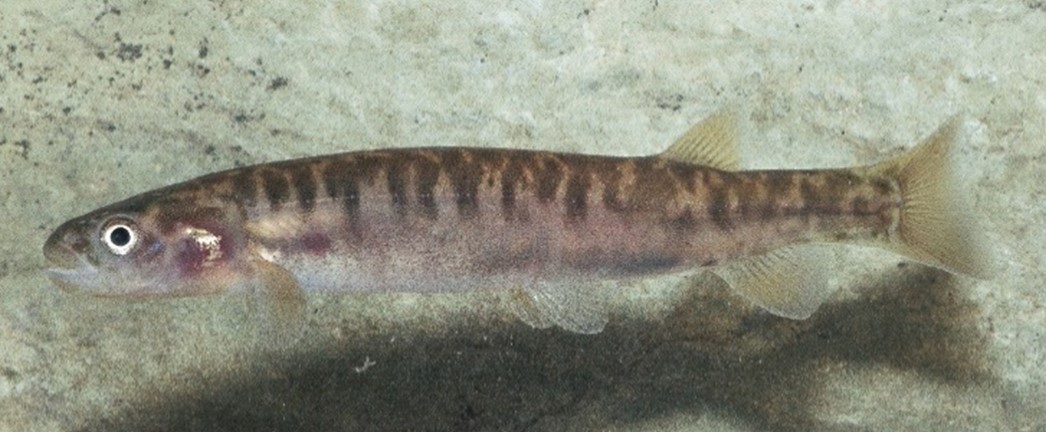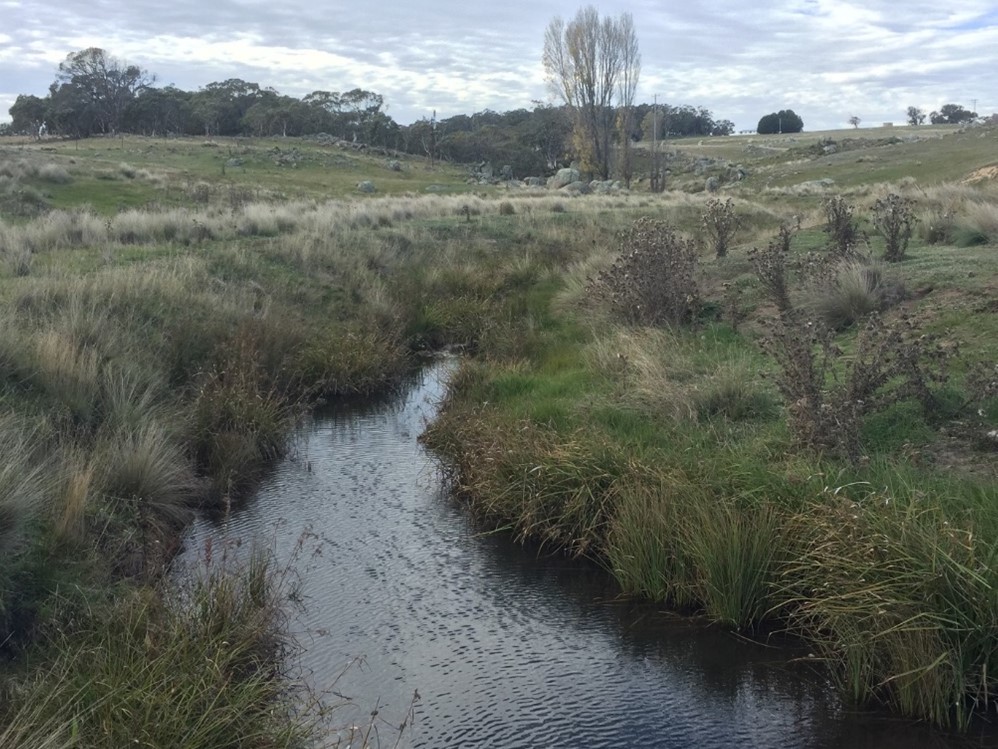
Short-tail Galaxias
Scientific name
Galaxias brevissimus
Status in NSW
Critically Endangered.

Figure 1. Galaxias brevissimus. Photo courtesy of Tarmo A. Raadik.
Characteristics
The Short-tail Galaxias is a small freshwater fish with an average length of 70-75mm, however has been recorded up to 97mm. Some distinguishing features include:
- Predominately brown on the back and upper sides of the body.
- Small to moderately large, irregularly shaped, dark brown to black abundant blotches and spots over body
Species similar in appearance
Galaxias brevissimus is morphologically very similar to other members of the G. olidus complex.
Size
The short-tail Galaxias has an average recorded length of 70-75mm, however has been recorded up to 97mm.
Distribution
The Short-tail Galaxias is found at only four patchily distributed sites in the upper reaches of the Tuross River system in southern coastal NSW. The historic distribution of the species is unknown however, the species is considered to have been historically more widespread.
Report a Short-tail Galaxias sighting
Habitat
Short-tail Galaxias have been recorded from two different stream types including:
- Narrow, gently flowing streams with moderate turbidity that generally have a clay substrate with fine to coarse sand substrate overlain. Habitat is generally highly modified by clearing for grazing and agriculture with riparian vegetation predominantly pasture and tussock grass.
- Narrow, moderately flowing stream through a steep gradient landscape dominated by Eucalypt forest. The stream substrate is predominately bedrock, boulder and cobble with fine and coarse sand in shallow pools.

Figure 2. Representative habitat for Galaxias brevissimus © Copyright, Mark Lintermans.
Why is the Short-tail Galaxias threatened?
- Small, isolated populations and a limited distribution makes the species vulnerable to any threatening processes.
- The spread, introduction and establishment of introduced salmonids into occupied waters.
- Habitat modification or destruction from vegetation clearing and farming practices as well as exotic species
- Increase in the frequency and severity of extreme weather events e.g. increased temperatures, drought and bushfires

